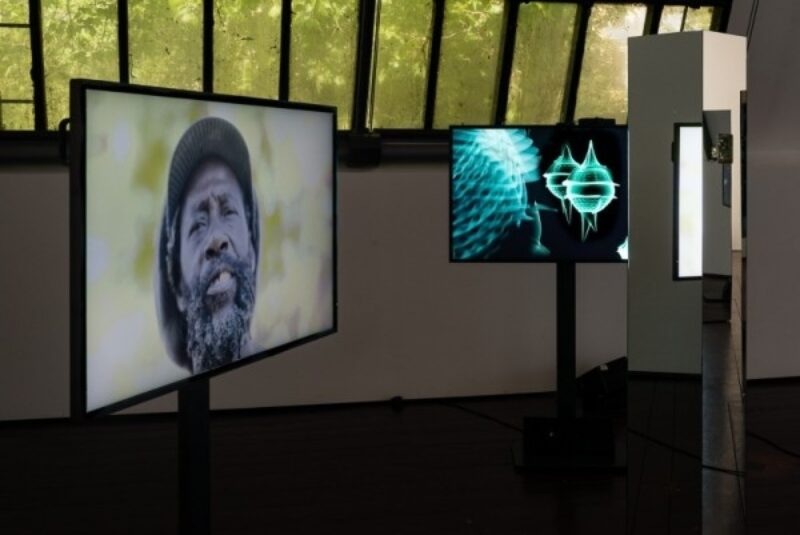“Between Bodies” Encourages Interconnected Ways of Thinking
Written by Ali R, during TeenTix’s arts criticism training workshop, the Fall 2018 Press Corps Intensive.

Imagine you’re standing in a dark room with mirrors scattered across it. TV screens hang from the walls and bubbles come across them every couple seconds. On one screen, a fisherman talks about his tradition of fishing. It’s very trippy, like you could be in "The Matrix." This mind-numbing experience is a work of art, “Glistening Troubles” by Susanne M. Winterling, just one part of the exhibition “Between Bodies” at the Henry Art Gallery.
The entirety of the exhibit felt like this. It didn’t seem to fit with other art exhibits. It stood out for its differences, mostly because of its tackling of environmental, social, economic and political issues from a perspective we don’t always see get a voice. Many of the artists use their experiences as members of LGBTQ communities to present these global issues in alternative ways, ways that promote collaboration and unity. It left the viewer thinking long after seeing it, trying to figure it out.

A Press Corps Intensive student at "Between Bodies" at Henry Art Gallery.
After several galleries of mixed media and video-based installations, we came upon a room with five tapestries hanging from the ceiling. These are works from Carolina Caycedo’s “Water Portraits” series, made of dye-sublimation prints of river imagery on canvas. They hang from the ceiling, trail across the floor, or swoop down from the high ceiling. This helped cultivate a grand feeling of majesty and power which kept with the artist’s goal of having the viewer recognize the importance and individuality of waterways.
While Caycedo takes a look at the importance of water to human bodies through her tapestries, Ursula Biemann’s “Acoustic Ocean” uses a different, yet no less powerful, artistic strategy. She utilizes a video that runs on a continuous loop, showing a different perspective of the importance of water to non-humans. It showed an aquanaut doing her research into the lives of marine animals. The only sound was that of the ocean, which was relaxing, and the different voices of various undersea creatures. Without human voices, this film offered a small yet extraordinary glimpse into the lives of those who study marine life and the marine life they study. The film also looked at the landscape surrounding these studies, the beautiful wild and melting ice called attention to the issues of climate change while the viewer also got to witness the relentless power of the ocean. This was the most moving of all the pieces as it showed the relationships between humanity and marine life, marine life and the landscape, and humans and the earth.

Ursula Biemann (Switzerland, born 1955). Acoustic Ocean(video still). 2018. Video installation with 5.1 surround sound; Duration: 8 minutes. Image courtesy of the artist.
Overall this was an incredibly impactful exhibit based on the interconnectedness of people, wildlife, and the amazing earth that we all live on. “Between Bodies” was the type of art exhibit that the viewer never quite figured out even after leaving, it confused the viewer’s mind rather than offering easy-to-grasp meanings or solutions. This, in turn, might suggest that we need to recognize the complexity of these extraordinary global changes and to generate alternative, expansive, interconnected ways of thinking. The deliberate confusion of the exhibit suggests the complexity of human and non-human bodies. The benefit of thinking “Between Bodies” is to take an introspective look at our impact on the environment and each other. It was because of this idea that the exhibit is so poignant in our current time. This exhibit brought the viewer in and made them think more deeply about the world around them.
This review was written as part of the Fall 2018 Press Corps Intensive. It was edited by teaching artist and critic Gayle Clemans.
The TeenTix Press Corps promotes critical thinking, communication, and information literacy through criticism and journalism practice for teens. For more information about other Press Corps programs including the Teen Editorial Staff or the TeenTix Newsroom, see HERE.


